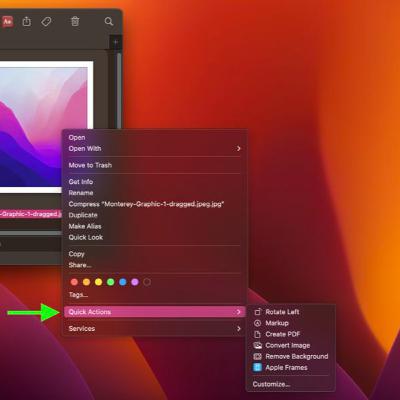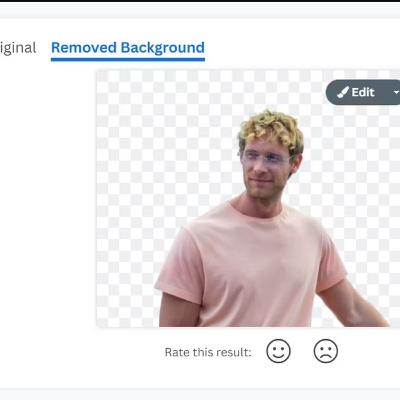Discover Remove BG
Remove BG

17 Episodes
Reverse
Video is the new form of content to grab users’ attention, making videos is a tedious task, unless you use AI to create videos. Usually, content creators utilize the same content from one platform on another platform, whereas platforms like Tiktok add their own watermark. Although the TikTok watermark can be removed you can be removed, it becomes difficult to remove other watermarks. To help you out, today we will discuss the easy ways to remove any watermark from a video.
It is quite easy to remove watermarks from photos, but things aren’t easy when it comes to removing watermarks from videos. Below we have shared the best services and tools, for Web, Mobile, Windows, and Mac to help you remove the watermark from videos.
A watermark will make it easy to detect ChatGPT-generated content. This is what it is and why it might be easy to defeat. OpenAI’s ChatGPT introduced a way to automatically create content but plans to introduce a watermarking feature to make it easy to detect are making some people nervous. This is how ChatGPT watermarking works and why there may be a way to defeat it.
ChatGPT is an incredible tool that online publishers, affiliates and SEOs simultaneously love and dread.
Some marketers love it because they’re discovering new ways to use it to generate content briefs, outlines and complex articles. Online publishers are afraid of the prospect of AI content flooding the search results, supplanting expert articles written by humans.
Consequently, news of a watermarking feature that unlocks detection of ChatGPT-authored content is likewise anticipated with anxiety and hope.
AI is causing all sorts of trouble for the creative community, with stealing from human artists being just one of the major issues. But a new service that's appeared on Product Hunt is a nightmare for copyright in a different way, because this technology, named WatermarkRemover.io, promises to remove watermarks from photos for free.
When a photo is out in the wild online, watermarks are often the only thing protecting a photographer's work. So the advent of a free tool that can remove them is extremely worrying for the creative community – and leads to many questions about what the future holds for the regulation of AI technology. This certainly won't be added to our list of the best photo apps any time soon.
The already-contentious relationship between AI and the creative industry might soon get even more complicated thanks to a free-to-use service that can completely remove watermarks from images. Watermark Remover.io (as seen via Creative Bloq) is a tool offered by Pixelbin.io that removes identifiable watermarks with a single click and has sparked conversations surrounding copyright protections since being listed on Product Hunt last year.
The functionality of Watermark Remover.io isn’t new — similar tools already exist, and you can also remove watermarks using things like Adobe Photoshop’s content-aware fill. However, these aren’t as accessible as Watermark Remover.io (they’re often paywalled), which is completely free, available on the web and as an Android app, and does the job with a single click.
The tool is particularly interesting in the context of AI’s disruptive effect on the creative industries — including stock image companies that rely on watermarks to protect their content. Stock image giant Shutterstock recently introduced its own text-to-image generator based on OpenAI’s DALL-E 2, and Adobe Stock has also welcomed the technology by accepting AI-generated content for sale on its platform. This is despite criticism from creatives that their content is often scraped from the web without compensation or consent to train these same systems.
Platforms like Shutterstock and Adobe Stock apply large watermarks to their content to prevent the images from being used without permission. These companies may be content with AI while it generates cash for them, but they likely won’t be so keen on it being used to steal their assets. And Watermark Remover.io enabled us to (theoretically) do that very, very easily.
Do you ever wonder what your fluffy Akita might look like in its natural wintry habitat? Or perhaps, what your cuddly black cat might look like in an unnatural, hostile habitat, like the endzone of an NFL stadium?
While we didn't need Photoshop to envision the latter this football season, in general, Photoshop is your go-to tool to make what's usually only imaginable a reality, or as real as a picture, at least.
Removing a background in Photoshop paves the way for some of the most fun uses of the application.
And while there are more complex, time-consuming ways to rid your subject of its boring background, there's an easy method you can go about with the Quick Selection Tool in Adobe Photoshop CC 2020.
How to remove a background in Photoshop
1. Start the Photoshop app on your Mac or PC. Pull up the image you'd like to remove the background from by clicking "File," and then "Open…" from the top menu.
2. Next, it's time to wield the Quick Selection Tool. The icon, a solid rectangle surrounded by a dotted line, is found on the left side toolbar by right-clicking the Object Selection Tool and clicking the third icon.
3. Click piece by piece until you have surrounded the image that you want to remain in the foreground, or the part of the image that will remain after the background has been removed. You can also tap "Select Subject" in the upper "Options" menu bar.
There are a whole host of reasons why you might want to watermark a document. It can help you keep track of different types of documents, discourage people from copying your work, or let people know that your document is still a work in progress. If your document has a watermark, however, then there may come a time when you want to remove watermarks from a Word document.
Removing a watermark in Word is fairly easy, although occasionally you might find that a watermark isn’t playing ball. If that’s the case, there is another option you can try. The steps you’ll need to follow are also a little different depending on whether you’re using Windows or Mac.
Here’s how to remove watermarks from a Word document.
The Microsoft Word app has a few subtle differences depending on whether you’re using it on Windows or Mac. This means that the steps to remove a watermark will be different depending on which type of computer you’re using.
Using the Design menu should remove the watermark from your Word document. If it doesn’t work, you can try the header and footer method outlined below instead.
The Design menu is where the Watermark tool is found in Microsoft Word. This tool is used to create watermarks for your documents, and it can also be used to remove them too.
To remove a watermark from a Word document using the Design menu on Windows:
Click the Design menu.
In the ribbon, click the Watermark icon.
Select Remove Watermark.
Your watermark should now be removed. If this doesn’t work, try the method shown below.
If the Watermark tool method doesn’t work, you can try manually deleting the watermark, which should be editable when you access your headers and footers.
To remove a watermark through the header and footer:
Double-click at the top of the page to open the header and footer.
Hover over the watermark until the cursor turns into a four-headed arrow. If this doesn’t happen automatically, try clicking on the watermark.
Once your cursor has changed to a four-headed arrow, click the watermark to select it.
Press the Delete key on your keyboard to delete the watermark.
Repeat the process for any other watermarks on the page.
Click Close Header & Footer to return to editing your document as normal.
How to Remove a Watermark on WindowsHow to Remove a Watermark from a Word Document Using the Design MenuHow to Remove a Watermark Through the Header and Footer
A lot of smartphones these days notoriously add a "Shot on" watermark on all the photos you capture using their camera. For those who don't know, this isn't necessarily a new feature we just started seeing on phones. If I recall correctly, the Huawei P9 was one of the first phones that felt the need to slap a "Huawei P9 - Leica Dual Camera" watermark on all the photos I captured. It's not necessarily a deal-breaker for me but I see how it can be not very pleasant for many who want their images to come out unscathed. Luckily, you can turn off these manufacturer watermarks, and here's a simple guide to teach you how to do it. You can also navigate this article using the index below to see how to remove those watermarks from the images after the fact.
How to turn off manufacturer watermarks in the camera app
The steps involved in disabling the manufacturer's watermark are almost identical in the case of all Android phones that add it in the first place. You'll find the watermark option on the settings page within the camera app. The camera settings option is usually seen as a cog icon on the viewfinder screen. It usually hides behind a three-dot or the Hamburger menu icon. I happen to have a OnePlus 10 Pro and a Vivo X60 Pro Plus with me while writing this article, so here are a couple of screenshots below that should give you an idea of where to find this watermark option within the camera app:
OnePlus phones
Open the camera app and tap on the three-dot icon on the top right corner of the screen to find the camera settings icons.
Tap on it to open the camera settings page.
You notice that Watermark is the first option on the settings page, and you can toggle it on or off with just a tap of a button.
If you frequently edit videos on TikTok, chances are you’re using the CapCut video editing app. However, there’s one part of the app that is annoying, especially if you want to put your own name on the video: the watermark.
Fortunately, removing the watermark is a relatively straightforward process. In this article, we’ll tell you everything you need to know.
There are two types of watermarks in the CapCut app: one in the templates and one at the end of the videos. The first type of CapCut watermark refers to the two-second segment at the end of the video that shows the CapCut logo and your choice of text if you wish to add one. This type is easier to remove.
Here are the steps:
Launch the CapCut app on your phone.
Add a new project by clicking on “New project.”
Once you’re in the editing space, slide the video to the right to reach the ending segment, which is automatically added. It’s separate from the video you uploaded, which makes the removal easier.
Select the ending segment and tap “Delete” at the bottom of the screen. Unlike the rest of the video, you can only delete the ending clip.
Now, you can continue editing the rest of the video.
When you finish, export the video by clicking on the arrow pointing upwards in the top right corner of the screen. Next, upload it to TikTok, share it on your other social media accounts, or just save it to your device by clicking “Done.”
Given the right tools, you can do a lot with PDFs. You can merge, convert, compress, resize, trim, split, rotate, and (un)lock PDFs, among others. Best of all, you can do all these for free. Another cool thing you can do with PDFs is to add or remove a watermark. But what about getting rid of one?
Here, you'll learn more about why people remove watermarks and, most importantly, how to remove a watermark from PDFs online.
If you're like most PDF users, you probably already know how to add a watermark to a PDF. But did you also know that you can remove a watermark from a PDF file and that you can do it online, for free?
Before we delve into how to remove a watermark from PDFs, let us see some reasons why people remove watermarks from PDFs in the first place.
The document has been declassified.
You no longer need the watermark.
The watermark needs to be removed and replaced.
The watermark is a logo or mascot and is being changed or rebranded.
The watermark is not well-placed.
The watermark interferes with reading, among others.
Now, let's jump into how to remove watermarks from PDFs using some free tools.
Why You May Want to Remove Watermarks From a PDF File
You can lift the subject from your image and remove the background as if by magic on your iPhone. Here’s how.
If you want to quickly remove background from any image on your iPhone, then iOS 16 has one of the most useful features - the image background remover. The best part is that you don't need to install any third-part app to remove the background from a picture. All you need is your iPhone to do the magic. One thing you must do is to make sure that your iPhone is running on iOS 16. Removing the background from a photo is simple, but if you want to try the same trick with multiple photos, then you will have to make a little bit more effort.
First of all, tap on your Photos app.
Then click in the upper right-hand corner and select the photos you want to remove the backgrounds from.
After that you can click the Share button in the lower left corner to share on any app.
If you scroll down, then you find the option to save the image to Files. Choose your save location and tap Save.
How to remove background from an image on iPhoneStep 1:Step 2:Step 3:Step 4:
In macOS Mojave and later, the Finder includes Quick Actions that make it easier to perform quick edits to files without having to open the apps associated with them.
In the default set that Apple includes with every macOS install, there's a very handy Quick Action that allows you to remove the background from a selected image or photo.
The feature lifts the subject out of the picture and turns it into a PNG file, which makes the background transparent. The Quick Action works best on images with a clearly defined subject in the foreground, like a person or object, set against a fairly uniform background.
To use the Remove Background feature in macOS, simply right-click an image file in Finder, hover your cursor over the Quick Actions submenu, then click Remove Background.
Wait for the image to be processed (you may see a progress bar appear if the image is particularly complex), and you should soon see a transparent PNG version of the file appear in the same location as the original image, titled "[original filename] Background Removed.png."
With the ongoing wave of short videos and reels, a lot of new creators have come up, making eye-catchy content. But the perfect recipe for a creator’s success is not just visuals, the audio is equally important. As a video poor audio, or background noise makes the viewer skip the video. So in this, read we will help you with quick and easy ways to remove background noise in reels. Meanwhile, you can also learn to change audio speed without changing pitch.
Methods to Remove Background Noise in Short Videos
If you don’t like an image’s background, there are several ways to remove it. A full-fledged photo editing program is the most preferred way to do this for many people since it gives more control over the edits.
How to Use Preview’s Remove Background Feature to Remove Background from an Image
Since the Remove Background feature is available in Preview as part of the macOS Ventura update, you first need to update your Mac to it. After it’s done, follow the steps below to use Preview’s Remove Background feature to remove the background from an image:
Open Finder and go to the folder that contains the image whose background you want to remove.
Double-click on the image to open it in Preview. Or, right-click on it, select Open With, and choose Preview.
Once the photo opens in Preview, click on Tools from the toolbar and select Remove Background. Alternatively, you can press the Command + Shift + K keyboard shortcut to trigger the feature.
If it’s a JPEG image, Preview will ask you to convert it into PNG since it supports transparency. Go ahead and click on Convert to allow the conversion.
Wait for a few seconds, and Preview will create a new image with a transparent background.
The number of things we can do on a smartphone has grown exponentially over the past few years. This applies also to image editing on phones. From only being able to crop or perform basic editing, we can now perform advanced tasks such as removing objects from images and even complete background. Here you will come to know the complete guide on how to remove backgrounds from Images on Android.
Background removal was available for many years but not many people knew about it and background removal was not that perfect either. Now thanks to advanced algorithms, background removal works better than ever. But there will always be room for improvements. Don’t mistake Object Eraser for Background Remover, both are different.
The first question that comes to everyone’s mind is why to remove background or what is the need to remove background. Let’s say there is an object you want to share with your friends or family but not with the background, then you need to remove the background and share the object. Also if you want to set the main object to a different background you will need to remove the background and paste the object to another background.
If your photo has been photobombed by someone, you can remove that person along with other backgrounds from the photo.
Why remove Backgrounds from Images?
Ever needed to remove the background from a photo in a hurry? Maybe you're working on a project, and you need to isolate the subject of an image, but you don't have access to Photoshop or other professional software.
Or maybe you just want to quickly remove the background from a photo so you can use it as an avatar for your social media profile. Whatever the reason, there's no need to fret. There are a few ways you can quickly and easily remove the background from a photo without professional help.
The latest versions of Finder in MacOS offer a handy new Quick Action that allows you to remove the background from any image or photo, lifting the primary subject(s) out of the picture and turning that into a transparent PNG file. This is super useful for designers and developers, but it’s also useful for more casual users who would like to remove the background from a picture.
For background removal to work well, you’ll want to use it on a photo or picture with an obvious subject in the foreground – a person, animal, object. And for best results, try to avoid very busy backgrounds, for example a photo of someone with messy hair laying over grass of a similar color, will likely not work too well.
How to Remove Background from Images on Mac via Finder
From Finder, locate the image or photo you want to remove the background from
Right-click (or control-click) on the image, and go to “Quick Actions”
Choose “Remove Background”
Wait a moment for the image to process, soon a transparent PNG of the same file will appear in the same folder, titled as “(original file name) Background Removed.png”
If the image is particularly complex to remove the background from, you’ll see a progress bar popup in the Finder.
A great click but embarrassing background? Don’t worry! Apple Inc. has got you covered with its latest software update for iPhones: iOS 16. The new iOS allows you to easily remove background from your image in iPhone 8, 9, 10, 11, 12, 13 and 14.
iOS 16 was first released for public beta back in July 2022. One of its most talked about feature was this new option to easily remove background from images for free. In this article, we tell you some easy steps to remove background from image in iPhone 13.
Note: Before you move any forward, know that only iPhone 8 and later models will be compatible with the iOS 16. So, we you have one of these later iPhone models, download & install the new operating system to get the inbuilt image background remover.
Steps to remove background from image using Photos
Open Photos and find the photograph, in which you want to crop out the background.
Press and hold that part of the image that you want to keep.
The background eraser in your iPhone or iPad will automatically separate your subject from the background. If the aperture completely encloses the subject, the background is getting removed. Else, wait for the subject and background to get separated.
Once you have removed the background, a pop-up window will appear.
Tap on “Copy and Share” option. Now, you can share it online with your friends or copy it to other software for further editing.










